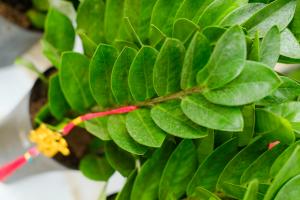How do plants breathe in water?
Plants are fascinating organisms that have the unique ability to convert sunlight into energy through the process of photosynthesis. However, not all plants survive solely on land. Some species, such as water lilies and seaweed, live in aquatic environments where they face a different set of challenges in obtaining the necessary nutrients and oxygen to survive. This leads to the question, how do plants breathe in water?
Diffusion through small pores
The primary way aquatic plants breathe is through small pores on their leaves, stems, and roots. These pores, called stomata, function similarly to the stomata in terrestrial plants by allowing gases, such as oxygen and carbon dioxide, to diffuse in and out of the plant. The difference is that in aquatic plants, the oxygen they need to survive can only come from the water around them.
Because water holds less oxygen than air, aquatic plants have to work harder to obtain the oxygen they need. This is why many aquatic plants have thin leaves and stems to facilitate the diffusion of gases. They may also have numerous stomata or hair-like structures called lenticels, which help exchange gases between the plant and its environment.
Root structures and adaptations
Aquatic plants also have specialized root structures and adaptations that allow them to efficiently take in oxygen from the surrounding water. For example, some species, such as mangroves and cypress trees, have aerial roots that extend above the water's surface. These structures facilitate the exchange of gases between the plant and the air, allowing the roots to take in oxygen while remaining submerged in water.
Other plants, such as the water hyacinth, have air-filled spaces in their roots that act like a snorkel, allowing them to take in oxygen from the air without having to absorb it through their roots. Additionally, some aquatic plants have root systems that are adapted to take in nutrients and oxygen directly from sediments or other sources in the water.
Adaptations for survival
Many aquatic plants have evolved unique adaptations to survive in their specific environments. For example, some plants, such as the water fern, have evolved specialized leaves that form a tight rosette to trap pockets of air. This helps the plant to stay buoyant and allows it to take in oxygen from the air while remaining submerged in water.
Other plants, such as the waterweed, can rapidly adjust the number of stomata on their leaves in response to changing oxygen levels in the water. This allows the plant to efficiently take in oxygen even in low-oxygen conditions.
In conclusion
In summary, aquatic plants breathe in water primarily through stomata on their leaves, stems, and roots. They have adapted specialized root structures and adaptations to efficiently take in oxygen from the surrounding water, and many have evolved unique adaptations to survive in their specific aquatic environments. By better understanding how aquatic plants breathe, we can gain a greater appreciation for the rich diversity of life that exists in our planet's ecosystems.

 how many times do yo...
how many times do yo... how many planted tre...
how many planted tre... how many pine trees ...
how many pine trees ... how many pecan trees...
how many pecan trees... how many plants comp...
how many plants comp... how many plants can ...
how many plants can ... how many plants and ...
how many plants and ... how many pepper plan...
how many pepper plan...

































